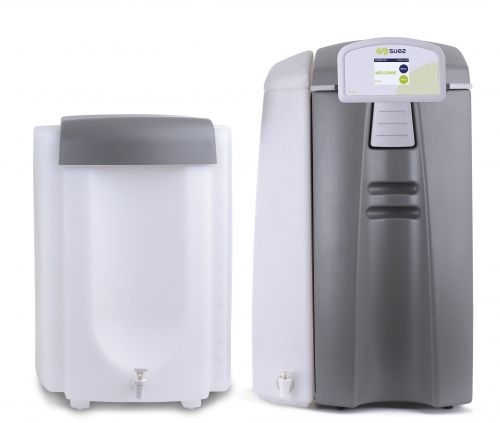Lab Water System from SUEZ Combines RO and EDI Technologies
Published on by Water Network Research, Official research team of The Water Network in Technology
SUEZ Water UK has launched an innovative new laboratory system, designed to reduce operating costs for laboratory water purification systems.

Developed as a standard benchtop unit, the new Select edi 60 combines double-pass reverse osmosis (RO) and electro-deionisation (EDI) technologies in a single compact system. This approach eliminates the need for conditioning cartridges and carbon dioxide pre-treatment filters, dramatically reduces total dissolved solids (TDS) and offers significantly improved energy efficiency.
EDI systems are widely used in laboratories for a wide range of duties, producing water to Grade I, II and II qualities. Although an effective solution, EDI cells are particularly sensitive to the presence of calcium and magnesium ions in the source water. EDI cells can also be damaged by the presence of dissolved carbon dioxide, while high levels of TDS will lead to a rapid decline in deionisation efficiency.
The solution employed in most laboratory EDI units is to install conditioning cartridges to reduce water hardness, pre-treatment filters to reduce dissolved carbon dioxide and single-pass RO membranes to protect each EDI cell still further. This arrangement, however, leads to high operating costs, which are often overlooked at the time of purchase. These can significantly increase total costs of ownership, especially in laboratories using high volumes of water or operating in hard water areas.
SUEZ Water UK has overcome these issues by, for the first time in a compact laboratory unit, combining double-pass RO and EDI technologies. This system operates efficiently with even the hardest of feed water sources, providing continuous and consistent volumes of water at the correct quality to the EDI cell and significantly reducing the need for consumables and maintenance.
This configuration also reduces TDS to extremely low levels. With a single pass RO there is typically a 96-98% reduction in TDS, while in a double pass system the remaining impurities are further reduced by 96-98%. This provides greater protection to the EDI cell, preventing scaling and helping to optimise its operating life, and results in higher overall quality of the purified output water.
Additionally, the use of the latest hollow fibre gas transfer membranes, allow dissolved carbon dioxide to be stripped efficiently from the water, as it passes from the water phase into the gaseous phase across the fibres. The process is highly effective and is driven by air provided by an on-board mini air pump.
The new Select edi 60 is easy to setup and use, with all controls being via a front panel mounted colour LCD, making it ideal for applications such as buffering, stains, reagent make-up, glassware rinsing and media preparation. The unit has a standard 20-litre tank, with 50 and 100 litre tanks available as options. With a feed water pressure of 2 bar, the unit produces 6 litres/hour at 10°C, and 10 litres/hour at 25°C. A feed water boost pump is fitted as standard to guarantee production rate.
The unit measures just 440 x 560 x 750mm, and is available in bench top or wall-mounted versions. It has a shipping weight of 25kg, and a maximum working weight of 45kg.
Source: SUEZ Water UK
Media
Taxonomy
- Treatment
- Electrodeionization
- Reverse Osmosis
- Technology
- Laboratory Equipment
- water treatment
- Electrodeionization
- Laboratory Testing
- Laboratory Equipment